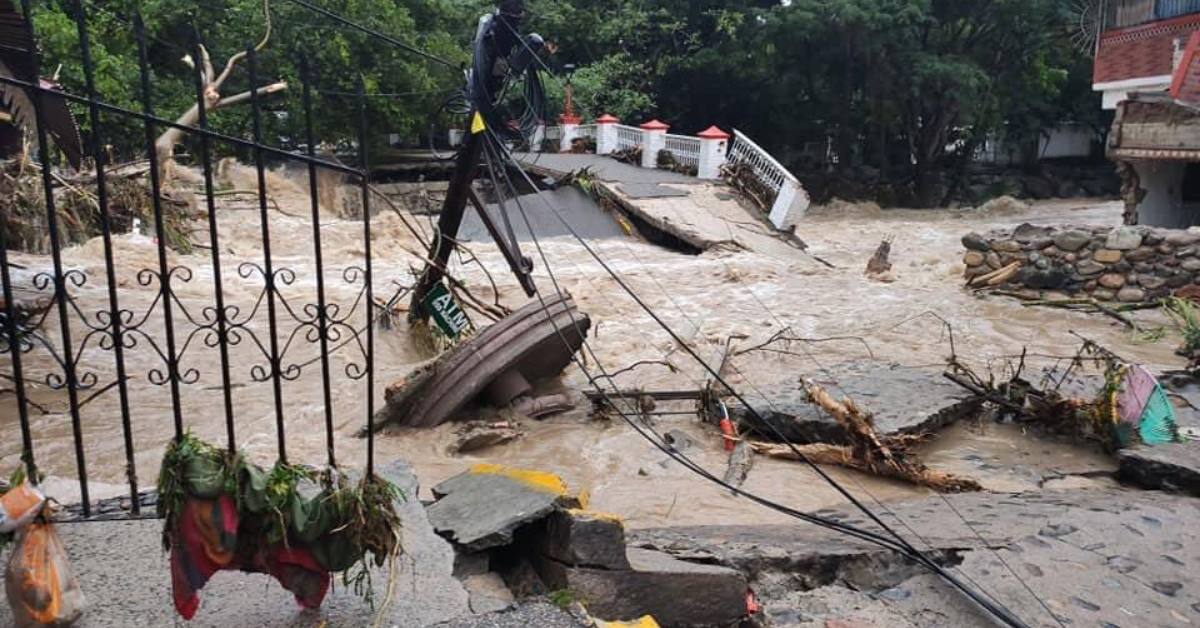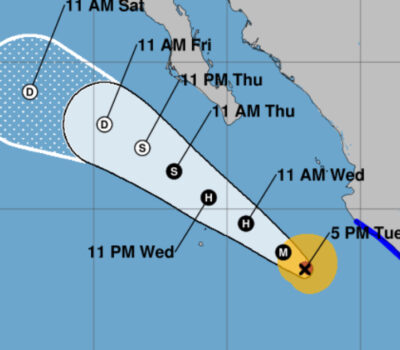Puerto Vallarta, Mexico – As tropical cyclone season intensifies, government agencies at local, state, and federal levels are ramping up prevention and information campaigns. However, the absence of fresh, adaptable policies to counter worsening climate-induced weather conditions leaves communities, particularly in Puerto Vallarta, increasingly vulnerable to disaster, says meteorologist Víctor Manuel Cornejo López. This year’s prevention strategy largely mirrors previous ones, despite the mounting evidence that traditional methods may no longer suffice.
Cornejo López, speaking recently at the reactivation of the Municipal Civil Protection Council, highlighted the urgent need for policy adaptation to meet the challenges posed by intensifying meteorological phenomena. Climate change, he explained, has escalated the aggressiveness and unpredictability of tropical cyclones impacting the Mexican coastline, with each storm season bringing heightened risk to populated areas along the Pacific coast, including Puerto Vallarta.
“With each year, we see a rise in frequency and intensity of these natural events, and while campaigns continue to inform and prepare the public, the core policies that would address infrastructure resilience, urban planning, and housing regulation remain stagnant,” Cornejo López commented. “The nature of tropical cyclones is evolving faster than our policies, and without proactive adaptations, we’re simply not prepared for the worst-case scenarios.”
Housing Expansion into High-Risk Areas Fuels Concerns
Cornejo López pointed out that despite frequent warnings from meteorological experts, Puerto Vallarta’s municipal planning continues to authorize housing developments in high-risk areas, including zones near riverbeds and hillsides susceptible to landslides and flash floods. This trend has raised concerns among residents and local experts, who see the unchecked growth of residential and commercial construction as a threat to public safety.
The priority given to real estate and economic development, even in potentially hazardous zones, has created a situation where Puerto Vallarta’s population may face increased risk. The decision to continue approving such developments, Cornejo López argues, places economic gain above population safety.
Resilience Without Policy Support: A Growing Gap
Cornejo López also advocated for a paradigm shift towards resilience, emphasizing the importance of adaptive capacities that would allow communities to weather extreme events and emerge stronger. Yet, he noted that Puerto Vallarta, like many Mexican municipalities, lacks an updated policy framework that would support resilient development practices.
“We need to ask ourselves if we’re prepared to face the real consequences of climate change,” he said, cautioning that by maintaining the status quo, Puerto Vallarta and similar regions may find themselves unprepared for the severity of future storms.
To adapt effectively, Cornejo López suggests a multi-pronged approach to incorporate climate resilience into local policies, with measures that include stricter zoning laws to prevent construction in high-risk areas, investing in infrastructure that can withstand extreme weather, and developing public awareness programs that go beyond yearly prevention campaigns.
Urging Policy Reform for Long-term Safety
While local authorities continue to educate and inform the public on cyclone preparedness, experts believe this annual cycle of preventative messaging without structural changes is insufficient. Climate models predict that Mexico’s Pacific coast will face increasingly severe weather patterns, suggesting that Puerto Vallarta’s current trajectory may lead to significant and potentially avoidable losses in life and property.
Residents and environmental advocates are urging decision-makers to heed the warnings of meteorologists like Cornejo López, calling for a policy overhaul that aligns with the escalating climate risks facing coastal regions.
In the meantime, Cornejo López plans to use every public opportunity to advocate for these changes, as he and others in his field continue to warn that the true cost of inaction may be yet to come.
Puerto Vallarta, Mexico – As tropical cyclone season intensifies, government agencies at local, state, and federal levels are ramping up prevention and information campaigns. However, the absence of fresh, adaptable policies to counter worsening climate-induced weather conditions leaves communities, particularly in Puerto Vallarta, increasingly vulnerable to disaster, says meteorologist Víctor Manuel Cornejo López. This year’s prevention strategy largely mirrors previous ones, despite the mounting evidence that traditional methods may no longer suffice.












